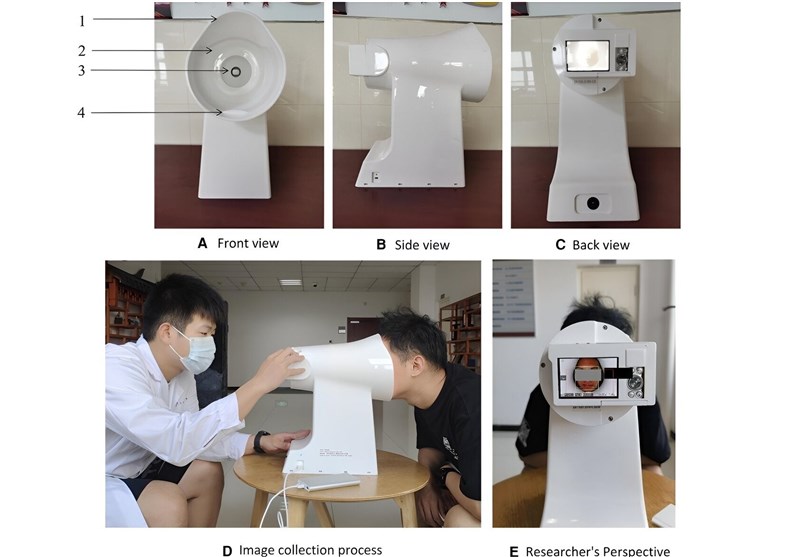AI-Powered Tongue Imaging Algorithm Shows Promise in Coronary Artery Disease Diagnosis
TEHRAN (Tasnim) – A new study has developed an AI-based diagnostic algorithm utilizing tongue imaging, offering a potential non-invasive method to diagnose coronary artery disease (CAD).
The research, led by teams from Beijing University of Chinese Medicine and Hunan University of Chinese Medicine, highlights the integration of traditional Chinese medicine (TCM) with modern technology.
Coronary artery disease (CAD) remains the leading cause of illness-related deaths globally, accounting for 17.9 million deaths annually, nearly one-third of all illness-based fatalities, according to the World Health Organization.
Currently, coronary angiography is the preferred method for confirming CAD diagnosis, but it is expensive, invasive, and not ideal for early diagnosis or risk assessment.
In search of a safer, more cost-effective diagnostic approach, researchers from Beijing University of Chinese Medicine's School of Traditional Chinese Medicine, Beijing University of Chinese Medicine's School of Life Science, and Hunan University of Chinese Medicine's School of Traditional Chinese Medicine developed a diagnostic algorithm based on tongue imaging using artificial intelligence (AI). Their findings were published in Frontiers in Cardiovascular Medicine.
Previous research on CAD diagnostic models has focused on clinical risk factors. Recent studies also suggest that biological factors like pulse waves and facial appearance can be significant in diagnosing CAD. However, while clinical diagnoses often rely on patient symptoms and signs, Traditional Chinese Medicine (TCM) offers a different but effective approach.
The study highlights that TCM employs unique diagnostic strategies, particularly in observing external conditions. The research team writes, "TCM theory posits that 'internal diseases manifest externally,' allowing practitioners to assess illness severity through observation."
Central to TCM observation is tongue diagnosis, which involves evaluating the tongue's color, coating, and shape. The tongue, rich in nerves and blood vessels, is an integral part of the cardiovascular system. Its appearance can change with the onset of systemic illnesses, especially those affecting blood circulation. Since 2019, at least 14 studies have validated tongue observation as an effective diagnostic tool.
With this understanding, the research team explored whether tongue images could serve as a non-invasive method for CAD diagnosis.
To develop their machine learning model, the team used the ResNet-18 network, pre-trained on an ImageNet dataset. They created two diagnostic frameworks: one based solely on CAD risk factors and another incorporating deep features of tongue images along with CAD risk factors. The selected algorithm for extracting tongue features, based on the Deeplab V3+ framework, achieved over 99% accuracy.
After evaluating several machine learning algorithms, the team chose XGBoost, which delivered the best results in a classification task involving "deep features of tongue images" and risk factors. The study found that including tongue image features significantly enhanced algorithm performance, suggesting that these features positively contribute to optimization.
The research involved recruiting hypertensive patients aged 18 to 85 from four hospitals between March 2019 and November 2022. The study cohort comprised 244 patients with hypertension and 166 patients with both hypertension and CAD.
The CAD diagnostic algorithm showed particularly strong performance in patients aged 65 and older and yielded consistent results across genders. It also demonstrated greater accuracy in cases with three or more risk factors, underscoring the importance of considering multiple risk factors in CAD diagnosis.
However, the study had limitations, including a small sample size, a lack of diversity in the patient population, and the use of a single type of equipment for tongue image collection, which limits the model's applicability in different settings.
The researchers recommend that future studies include a larger, more diverse population to validate and refine the diagnostic model. They also suggest that integrating additional biomarkers with tongue images could lead to the development of a broader diagnostic model.
"Our work introduces a novel perspective, suggesting that tongue images have applicable diagnostic value for CAD diagnosis," the researchers conclude. "Tongue image features could become new risk indicators for CAD, demonstrating the feasibility of integrating TCM theories with modern technology."






